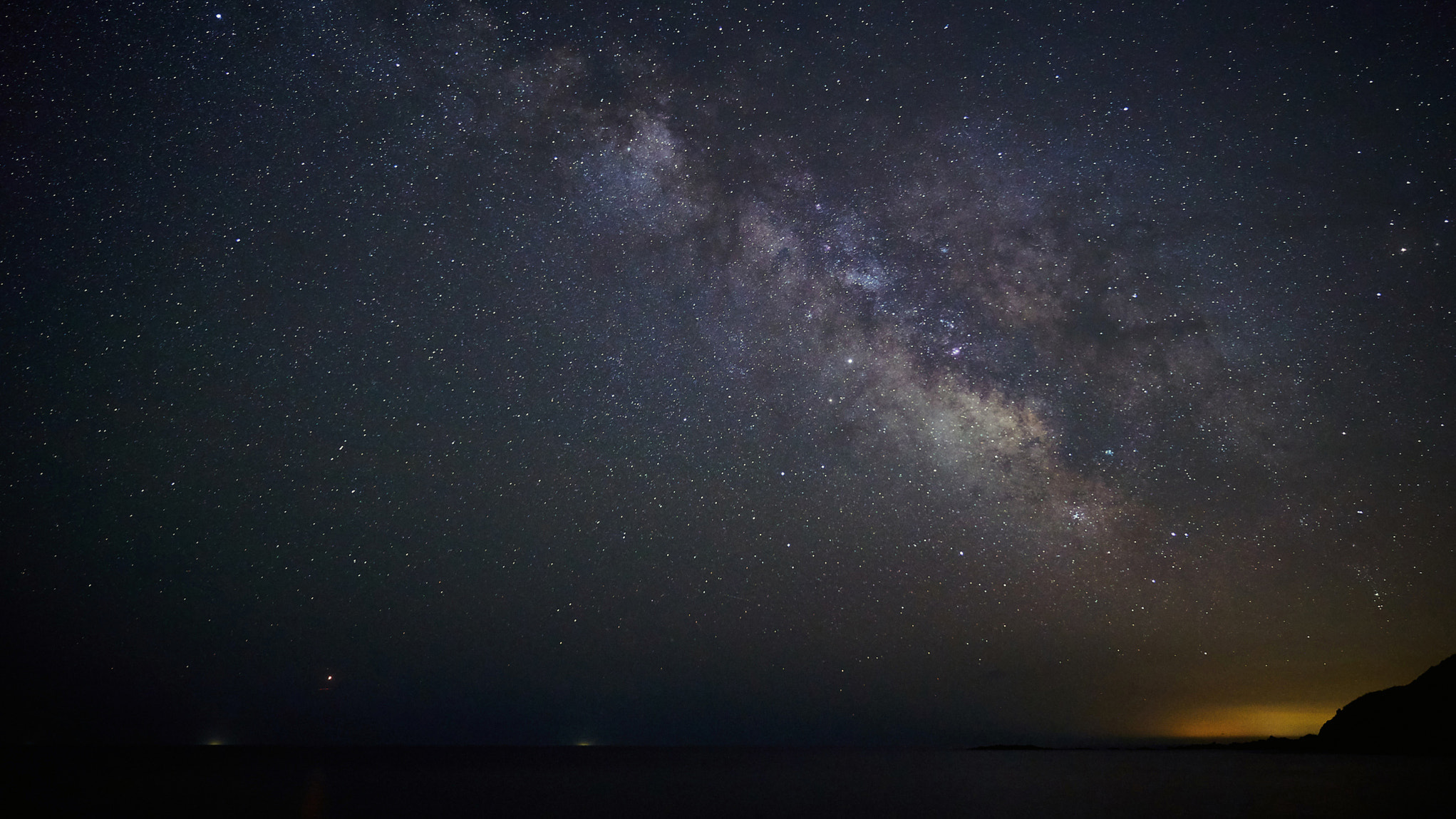How many stars are in the Milky Way?

The Milky Way is the galaxy in which Earth resides. Part of it is visible on a clear night (from sufficiently dark locations) as a thick opaque band of stars and dust stretching across the sky. We can see thousands of these stars with the naked eye, and many more with a telescope. But how many stars are in the Milky Way?
"It's a surprisingly difficult question to answer," said David Kornreich, an assistant professor at Ithaca College in New York. "You can't just sit around and count stars, generally, in a galaxy."
Even in the Andromeda galaxy — which is bright, large and at 2.3 million light-years away relatively close to Earth — we can distinguish only the largest and brightest stars. A sun-size star would be too difficult for us to see. So astronomers estimate, using some of the techniques below.
Related: This 3D map of the Milky Way is the best view yet of our galaxy's warped, twisted shape
The Milky Way's structure
Astronomers know that the Milky Way is a barred spiral galaxy that is about 100,000 light-years across. A view outside the galaxy would reveal a central bulge surrounded by four spiral arms, two major and two minor. The Milky Way's major arms are known as Perseus and Sagittarius. Earth's sun is located in one of two minor spurs, which is called the Orion Arm.
The galaxy is surrounded by a huge hot-gas halo that is several hundreds of thousands of light-years in diameter. Astronomers estimate that the halo's mass is about the same as that of all the stars in the Milky Way. Many of the Milky Way's stars, however, are tough to view. That is because the center of the galaxy has a galactic bulge filled with stars, gas and dust — as well as a supermassive black hole. Stuff in this region is so densely packed that even the most powerful telescopes cannot see through it.
Astronomers used to think that all of the stars in the universe were part of the Milky Way, but that changed in the 1920s when Edwin Hubble, the American astronomer after whom the famous telescope is named, managed to calculate the distance of the Andromeda nebula (today known as the Andromeda galaxy). He found that it was too far to be part of the Milky Way.
Breaking space news, the latest updates on rocket launches, skywatching events and more!
Weighing galaxies to estimate number of stars
The primary way astronomers estimate the number of stars in a galaxy is by determining the galaxy's mass. This can be done by analyzing the rotation of the galaxy and the spectrum of the light it emits.
In general, galaxies move away from each other as a result of the expansion of the universe (unless they are on a collision course). As a result, we see the light of distant galaxies shifted towards longer wavelengths due to the so-called redshift (that is essentially the Doppler Effect, the same effect that distorts the frequency of a passing siren as it moves away from a bystander).
In a rotating galaxy, however, there will be a portion that is more blueshifted (stretched towards the shorter wavelengths) because that portion is rotating toward Earth. Astronomers must also know what the inclination or orientation of the galaxy is before making an estimate, which is sometimes simply an "educated guess," Kornreich said.
A technique called long-slit spectroscopy is best for performing this type of work. Here, an elongated object such as a galaxy is viewed through an elongated slit, and the light is refracted using a prism. This breaks down the colors of the stars into the colors of the rainbow.
Some of those colors will be missing, displaying patterns of missing portions as elements of the periodic table that absorbed parts of the light. This lets astronomers figure out what elements are in the stars. Each type of star has a unique chemical fingerprint that would show up in telescopes.
Any kind of telescope can do this sort of spectroscopy work. Kornreich often uses the 200-inch telescope at the Palomar Observatory at the California Institute of Technology, but he added that almost any telescope of sufficient size would be adequate.
The ideal would be using a telescope in orbit because scattering occurs in Earth's atmosphere. The Hubble Space Telescope is one observatory known for this sort of work, Kornreich added. It's successor, the James Webb Space Telescope, launched in December 2021, will contribute to this work as well.
Determining how much of the mass are stars
Between different galaxies of the same mass, there could be differences as to the types of stars and the overall mass. Kornreich cautioned this would be very hard to speak about generally, but said that one difference could be looking at elliptical galaxies vs. spiral galaxies such as our own, the Milky Way. Elliptical galaxies tend to have more K- and M-type red dwarf stars than spiral galaxies. Because elliptical galaxies are older, they will have less gas because that was blown away during their evolution.
Once a galaxy's mass is determined, the other tricky thing is figuring out how much of that mass is made of stars. Most of the mass will be made up of dark matter, a type of matter that emits no light but which is believed to make up most of the mass of the universe.
"You have to model the galaxy and see if you can understand what the percentage of that mass of stars is," Kornreich said. "In a typical galaxy, if you measure its mass by looking at the rotation curve, about 90% of that is dark matter."
With much of the remaining stuff in the galaxy made up of diffuse gas and dust, Kornreich estimated that about 3% of the galaxy's mass will be made up of stars, but that could vary. Further, the size of the stars itself can greatly vary from something the is the size of our sun, to something dozens of times smaller or bigger.
The approximate number of stars in the Milky Way
So is there any way to figure out how many stars are in the Milky Way for sure?
According to Jos de Bruijne, a scientist at the European Space Agency (ESA) who works on the galaxy-mapping Gaia mission, the current estimate is between 100 to 400 billion stars. Getting to a definitive number, de Bruijne told Space.com, will be difficult.
The Gaia mission, in orbit since 2013, has managed to map positions of 1.7 billion stars in the sun's neigborhood up to the distance of 326 light-years. While astronomers could extrapolate those numbers to model the entire galaxy, even Gaia struggles to see some of the faintest and smallest stars and its results are therefore not perfectly accurate.
"The fundamental problem is to measure the luminosity [distribution] for very faint red dwarfs and then extrapolate to the brown-dwarf limit," de Bruijne told Space.com.
Red dwarfs are the most common stars in the universe and also the longest-lived ones. However, because of their low luminosity they are sometimes hard to spot. Brown dwarfs are even dimmer. These are basically failed stars that didn't manage to accumulate enough material to kick-start nuclear fusion in their core. They are therefore something between a star and a planet and therefore even more difficult to spot than faint red dwarfs, especially at long distances.
"A second complication for the entire story are double stars, the frequency of which is still not perfectly characterised," de Bruijne added.
De Bruijne expects that by the end of Gaia's mission in 2025, scientists will have a somewhat better idea about the number of stars in our galaxy but "significant uncertainties will likely remain".
Additional resources
Explore the map of the sun's neighbourhood created by the European Space Agency's Gaia mission in this video. To learn more about the Gaia mission and its quest to chart the Milky Way, visit the mission website.
If you want to try and capture the Milky Way yourself, we have guides to the best cameras for astrophotography and the best lenses for astrophotography, to help you see as much of the system as possible.
This article was updated on Feb. 3, 2022 by Space.com Senior Writer Tereza Pultarova
Bibliography
ESA, Gaia: Science with 1 billion objects in three dimensions https://www.cosmos.esa.int/web/gaia
ESA, Gaia creates richest star map of our Galaxy – and beyond, 25. April, 2018 https://www.esa.int/Science_Exploration/Space_Science/Gaia/Gaia_creates_richest_star_map_of_our_Galaxy_and_beyond
NASA, Astronomers release new all-sky map of Milky Way's outer reaches, 21. April, 2021
https://www.jpl.nasa.gov/news/astronomers-release-new-all-sky-map-of-milky-ways-outer-reaches
Join our Space Forums to keep talking space on the latest missions, night sky and more! And if you have a news tip, correction or comment, let us know at: community@space.com.

Elizabeth Howell (she/her), Ph.D., was a staff writer in the spaceflight channel between 2022 and 2024 specializing in Canadian space news. She was contributing writer for Space.com for 10 years from 2012 to 2024. Elizabeth's reporting includes multiple exclusives with the White House, leading world coverage about a lost-and-found space tomato on the International Space Station, witnessing five human spaceflight launches on two continents, flying parabolic, working inside a spacesuit, and participating in a simulated Mars mission. Her latest book, "Why Am I Taller?" (ECW Press, 2022) is co-written with astronaut Dave Williams.
